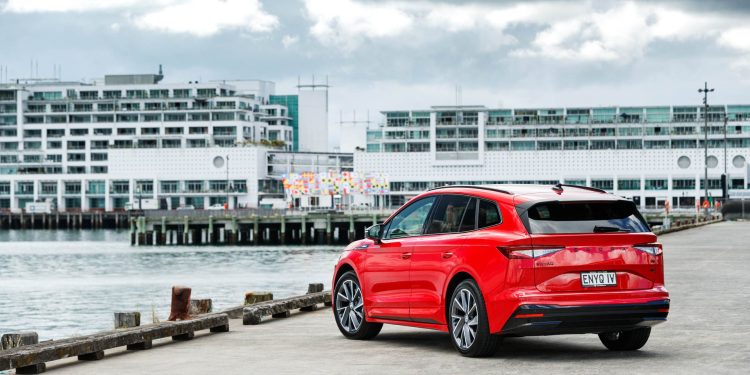2022 Skoda Enyaq Sportline iV 80
Words: Peter Louisson | Photos: Tom Gasnier
As European vehicles head down a zero emissions track, Skoda releases its first EV, with more soon to follow.
It’s a memorable moment when a legacy manufacturer releases its first battery electric vehicle, in this case Skoda with its Kodiaq-sized Enyaq. They have a new corporate logo too (well, an additional one at least) as seen in the puddle lamps, with eight solid slightly curved bars emerging above the Skoda lettering. And the result is something simple and effective (and drift world record holding). A bit like the new car then!
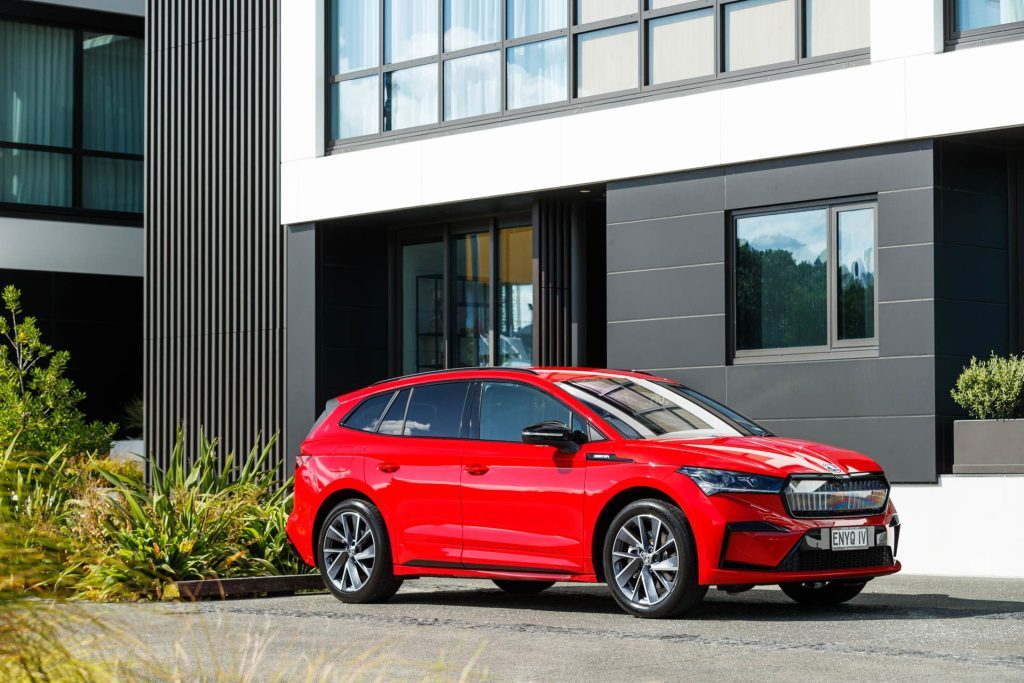
Built on the VW Group’s purpose-designed MEB skateboard electric platform, it’s somewhat ironic that Enyaq launches to the Kiwi media before Volkswagen introduces its ID.4. That said, the VW product starts at $79,990 drive away, so qualifies for the full $8625 EV rebate, though has less claimed range (485km) than Enyaq, none of the new Czech models coming in under the $80k threshold. Or even a $90k one for that matter. And customer cars won’t arrive here until September.
Anyway, the unusual name of the new model doesn’t reference pop’s powerhouse diva. Rather, the Irish name Enya evidently means ‘essence’ or ‘kernel’, referencing the beginnings of Skoda’s electric journey.
The company reckons 70 per cent of its local sales will be emissions-free by 2030, with three new models launching in the next four years. Some of these are bound to be eligible for the rebate, if it’s still offered.
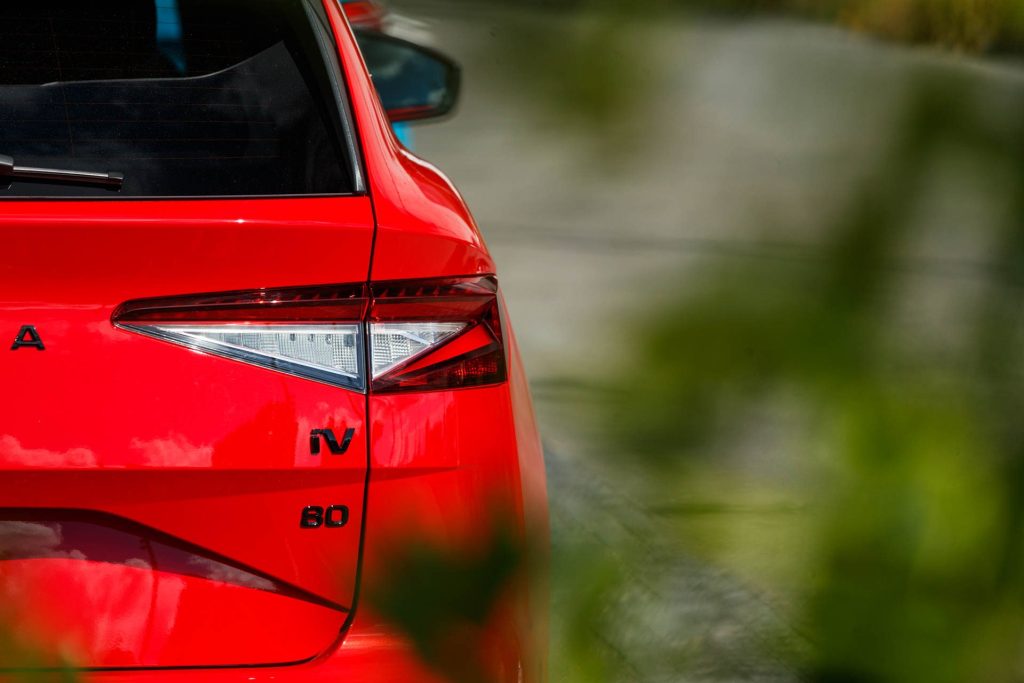
Helping Enyaq’s cause: this is arguably Skoda’s best looking vehicle to date. It has a commanding presence with its bluff front and interesting grille – more on that later – its nipped front and rear ends, raked screen and gently sloping roof line. The aeros reflect that, with a Cd of 0.26.
There’s really not a bad angle to this – there’s a Coupe version that looks just as interesting – and ditto the interior which features upmarket materials, a huge screen and just seems fresh. While no coupes are here yet, they will be available to order online at the same time as the SUV.
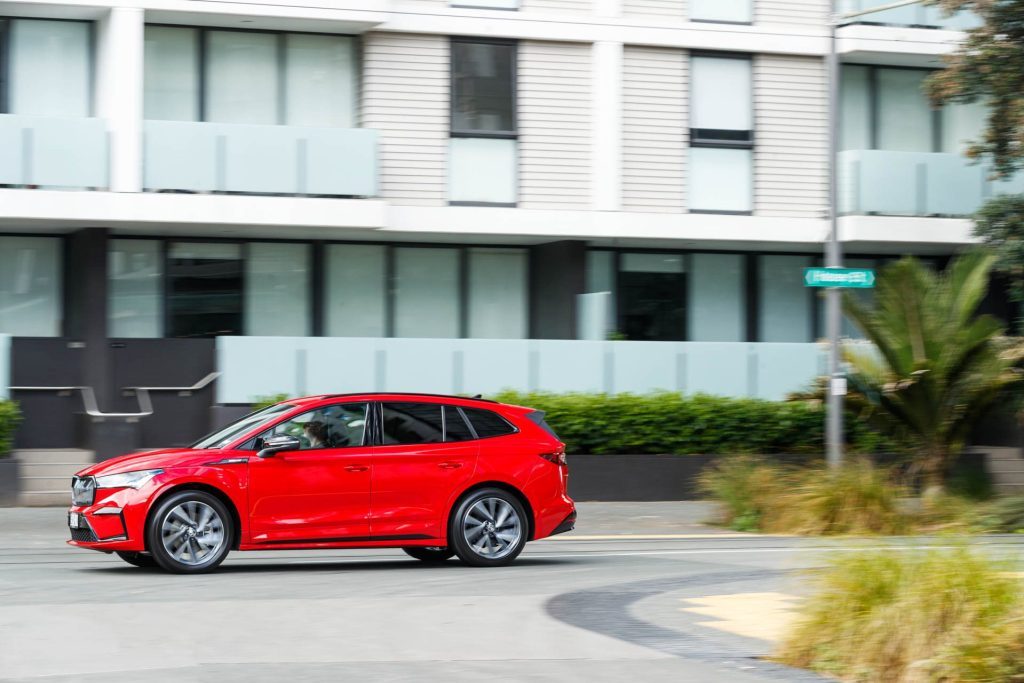
Three takes with more to follow
Initially Skoda is offering three models, based on Sportline 80 specification – the 80 referring to battery size (77kWh of it in usable charge). Each features the same single-motor rear-drive powertrain comprising the 82kWh battery pack and 150kW/310Nm motor mounted on the rear axle.
A full recharge from zip supposedly takes around 7.5 hours on an 11kW home charger, and a bit over an hour on a 50kW fast charger. Range is said to be around 530km, according to the WLTP method.
The Enyaq Sportline 80 SUV kicks off at $92,990 and comes with nine airbags, adaptive cruise with traffic jam assist, AEB, lane keeping, BSM, full keyless entry and start system, front and rear parking sensors, multiple drive modes, three-zone air and a 13-inch infotainment system.
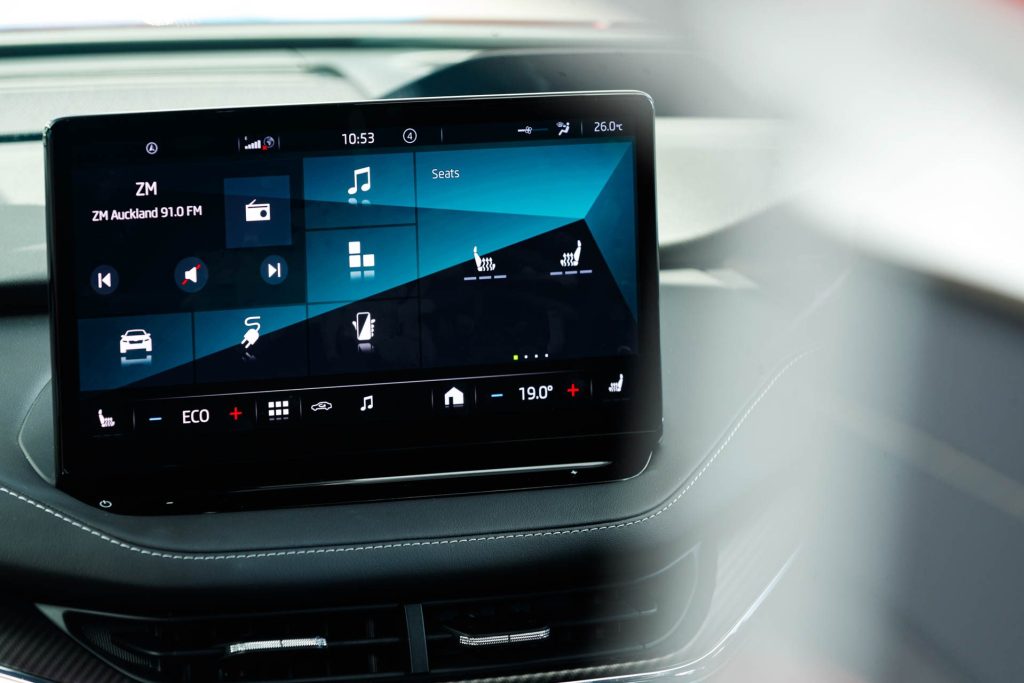
Next up is the Max variant that adds rear side airbags, adaptive dampers, head-up display, 360 degree surround camera, a massage function for the driver’s seat, and a Canton 12-speaker sound system, including a subwoofer. It is $5k more expensive at $97,990. Both variants ride on 20-inch rims and 21s are a $1500 option.
Headlining the Enyaq range is the Coupe which has much the same specification as the Max SUV and costs $102,990. It adds a full glass panoramic sunroof and a crystal face grille that lights up when the matrix LED headlights are activated. There are nine body colours, the metallic orange and red variants adding $1000 to the bottom line.
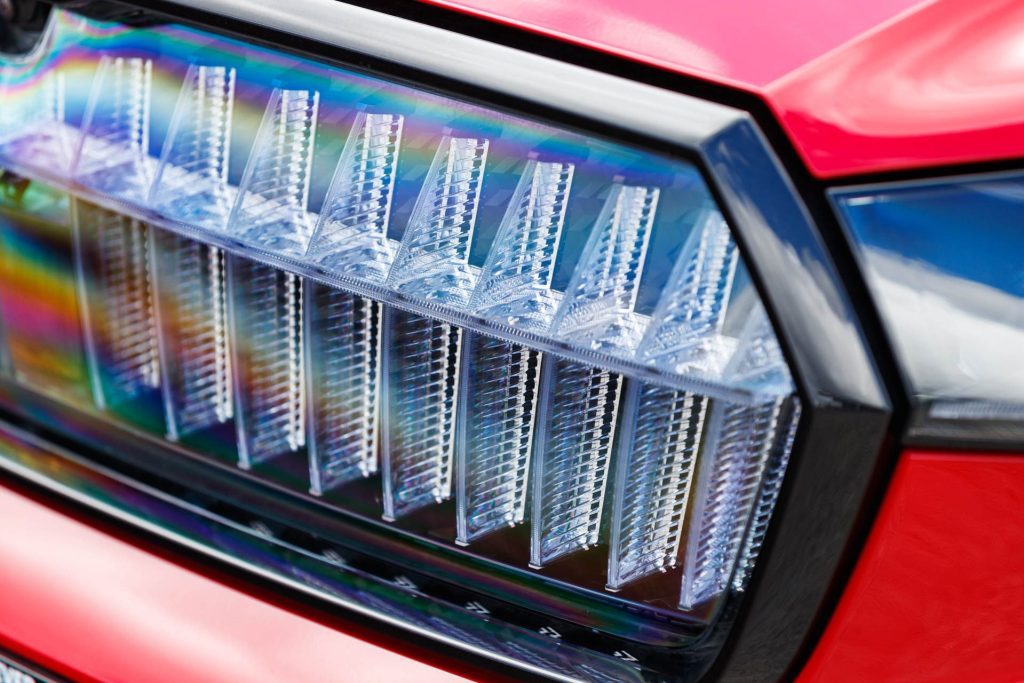
Country driving hush puppy
So it looks like a million bucks but how does it drive? In town it feels reasonably zippy, though at 2100kg and with just 150kW it lacks the initial rush you get with smaller, lighter single-motor vehicles. Zero to 100 takes a claimed 8.6sec which is quicker than what the similarly sized Skoda Kodiaq can manage with its 1.4L turbo petrol engine (9.4sec).
However, the claim is conservative; we managed a couple of 8.1sec runs, with overtakes requiring under 6sec.
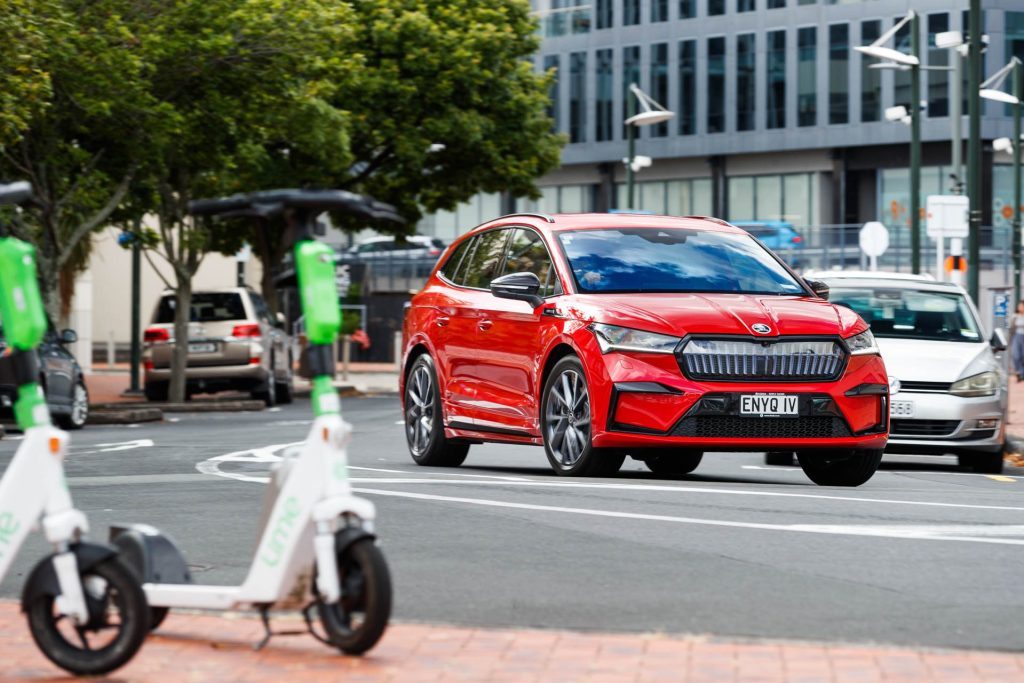
Sport mode beefs up the adaptive suspension in the Max variant which only ever offers rather impressive ride quality. There’s more body control in this setting as a result.
Not that there’s much wrong with default Normal, and we’d suggest you go Comfort which is best for round town speeds.
On the open road you can expect energy consumption of around 20kWh/100km, a bit more if you’ve hefty boots. That’s a bit shy of the claimed average (16.7) but then that WLTP assessment involves a mix of town and country running. On the motorway we saw around the claim.
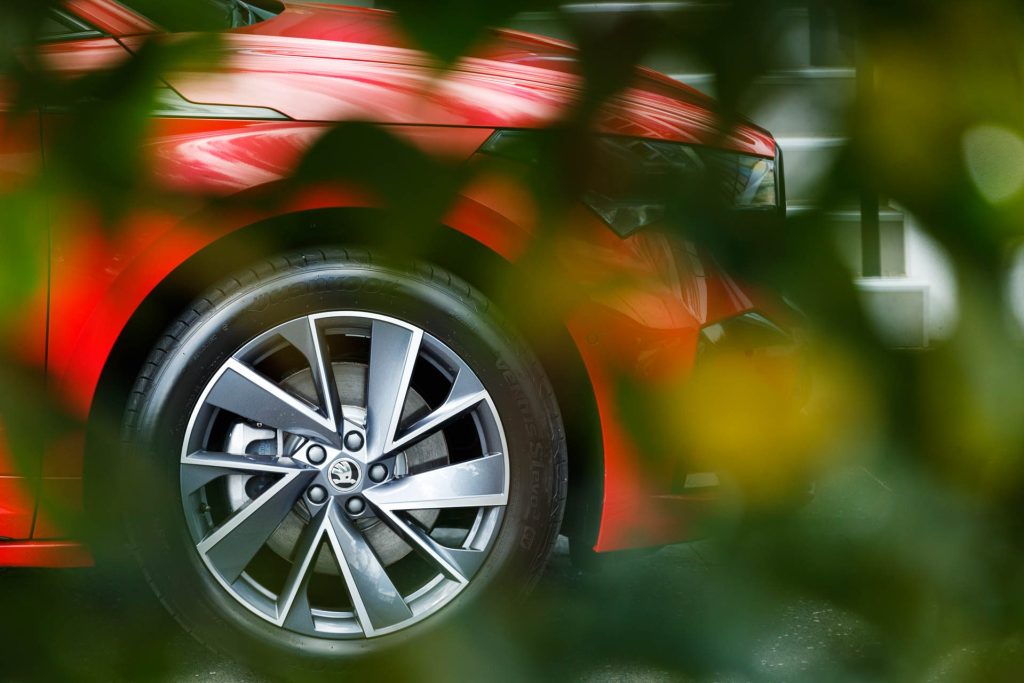
What a lovely distance drive this is. The Enyaq is nicely placed for those needing to do moderate to extended jaunts, with a theoretical range of nearly 550km. Naturally if it’s all at open road speeds, expect that to be closer to 400km.
But it is the first EV I’ve driven that managed our intermediate test circuit plus performance testing and returned home with over half a battery remaining (55 per cent).
It’s also impressively hushed (most dB readings in the sixties), with acoustic glass in the screen and side windows, almost no noise from the motor which is behind and below you anyway, rather than up front (where there’s no frunk), and you’re ensconced in seats that are powered, multiway adjustable, including lumbar pumps for both front seat passengers, and finished in a nice mix of suede and leather.
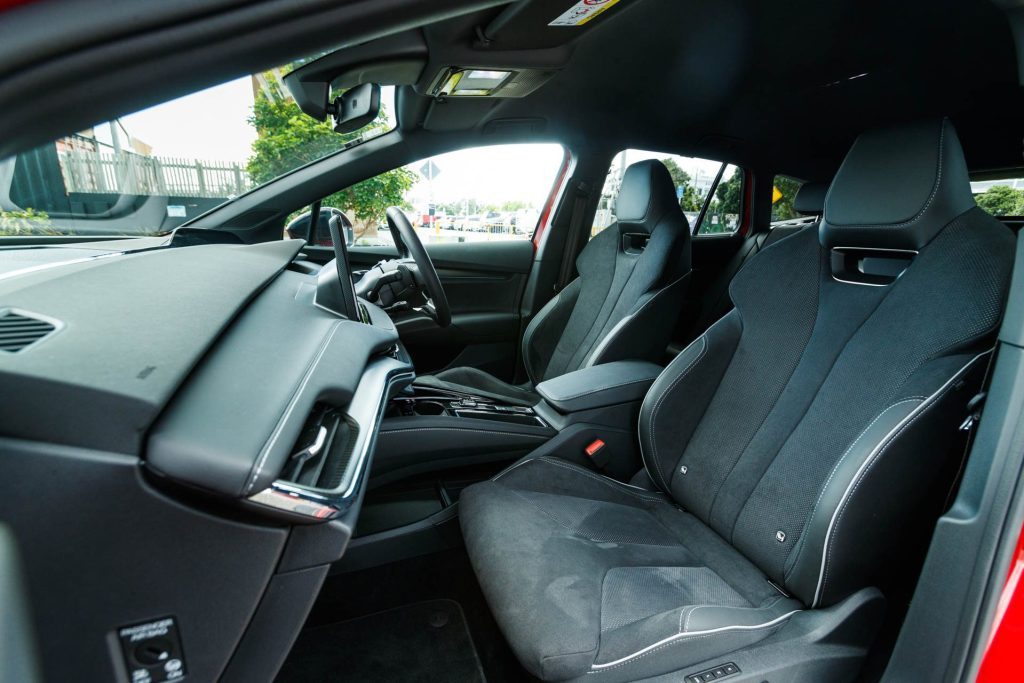
Logical to use
Approach the Enyaq key in hand and it self-unlocks. Slide on in, hit D and you’re away, the handbrake self-releasing. So it’s rather easy to drive, uncomplicated in the way that most Skodas are. Nav instructions are via Google Maps and Android Auto – navigation is coming – and they’re laid out seemingly on the bonnet in front of you thanks to the clear head-up display.
The other relevant info is in a refreshingly small motorcycle-like screen viewed through the wheel.
To the left is a 13-inch infotainment set-up which is logical enough in layout. Cancelling lane keeping is easy enough, though is not a one-button affair; it’s in one of the submenus, a few steps away.
Having done so and you’re met with a wheel that relays a decent amount of information back, though it’s best at this on the Sport setting where there’s more heft than in Normal. At any opportunity, lane keeping seems to reactivate itself.
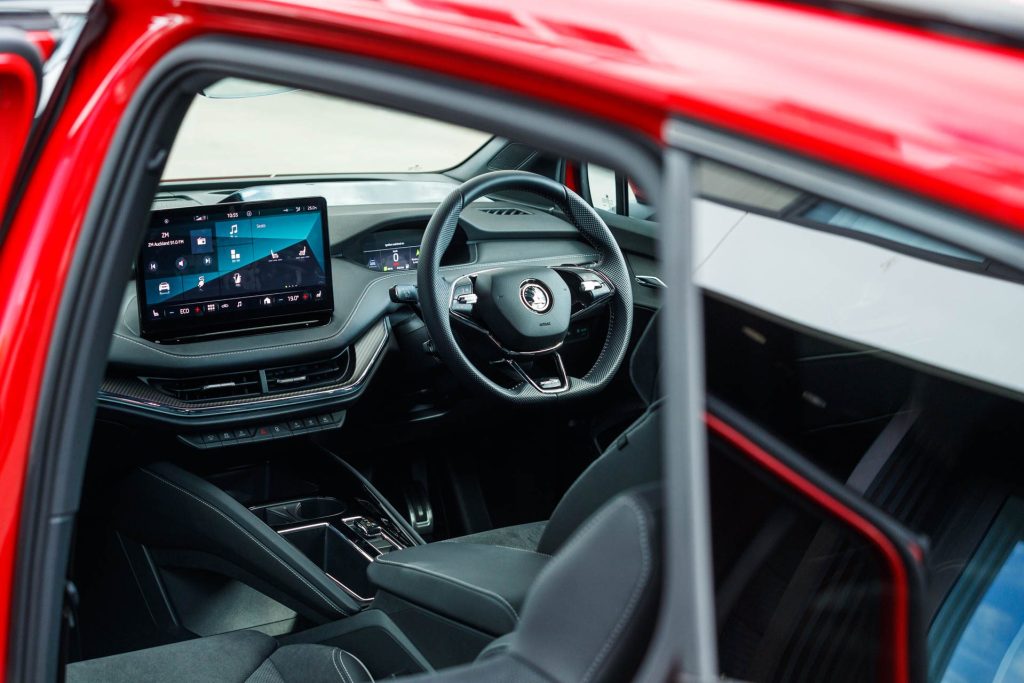
Being rear drive and with no real lump under the bonnet makes it rather biddable, changing direction nicely. The turning circle is tight too at a scarcely believable 9.3m. In Sport mode body control is good, while cornering limits are signalled by the EV specific rubber squealing its displeasure.
Understeer follows, though ESP steps in to prevent things getting unruly in tighter going. Forget about this rear driver rounding up into the corners under power. In more flowing countryside the ride and handling mix are well judged, even in Normal mode, though Sport is a touch better.
You don’t really need to rely on brakes all that much into corners either for there’s three regen settings on the paddles, coast, mild or moderate. We used these mainly although you can also opt for the B setting at the gear lever to slow you up.
Alternatively, you can just ease into the brake pedal instead and let the regen do its thing automatically. In traffic the Enyaq slows autonomously as you approach other vehicles, whether or not adaptive cruise is activated.
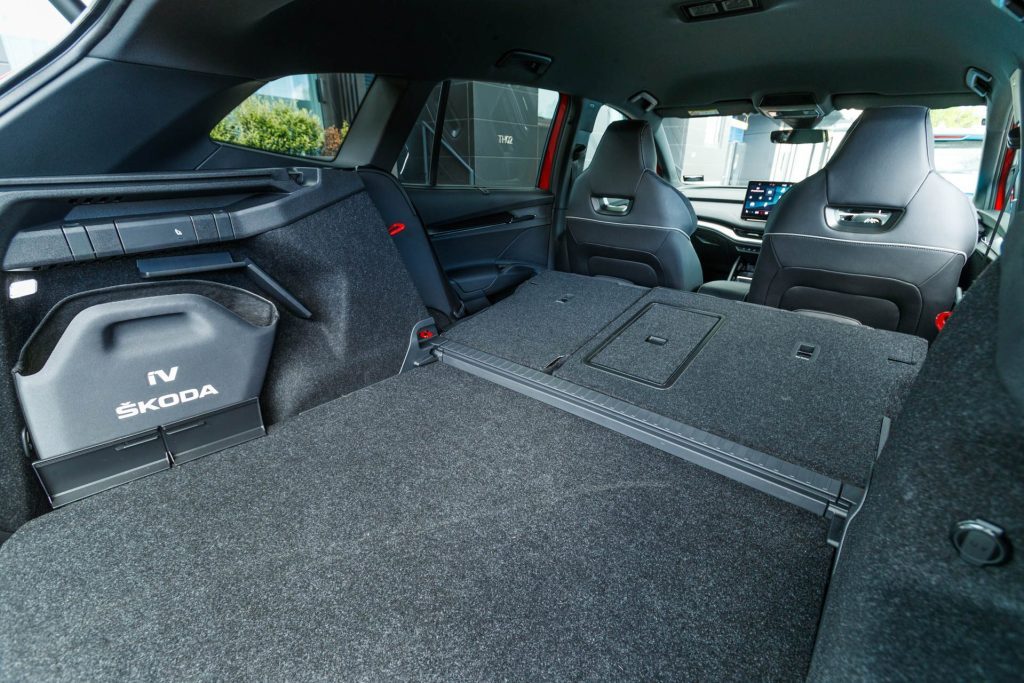
Comfort and practicality
Seat comfort is really good over the long haul, and there are heater elements for four passengers, and a toasty wheel for truly cold days. There’s also the facility to defrost the windscreen before driving which involves being App friendly.
Out the back there’s a generous amount of passenger space, the flat floor helping for even more leg room, along with plenty of head and shoulder space. Evidently the Coupe variant has just as much head clearance because it features a full dark tinted panoramic sunroof without a blind, adding 4mm of headroom.
It doesn’t have quite the luggage capacity of the SUV either but there’s only 15L in it (570 vs 585L) before releasing the spring-loaded latches holding the rear seat backs in place (1710L). Both variants have gesture-controlled powered tailgates too. Just kick an imaginary ball beneath the bumper and up she rises.
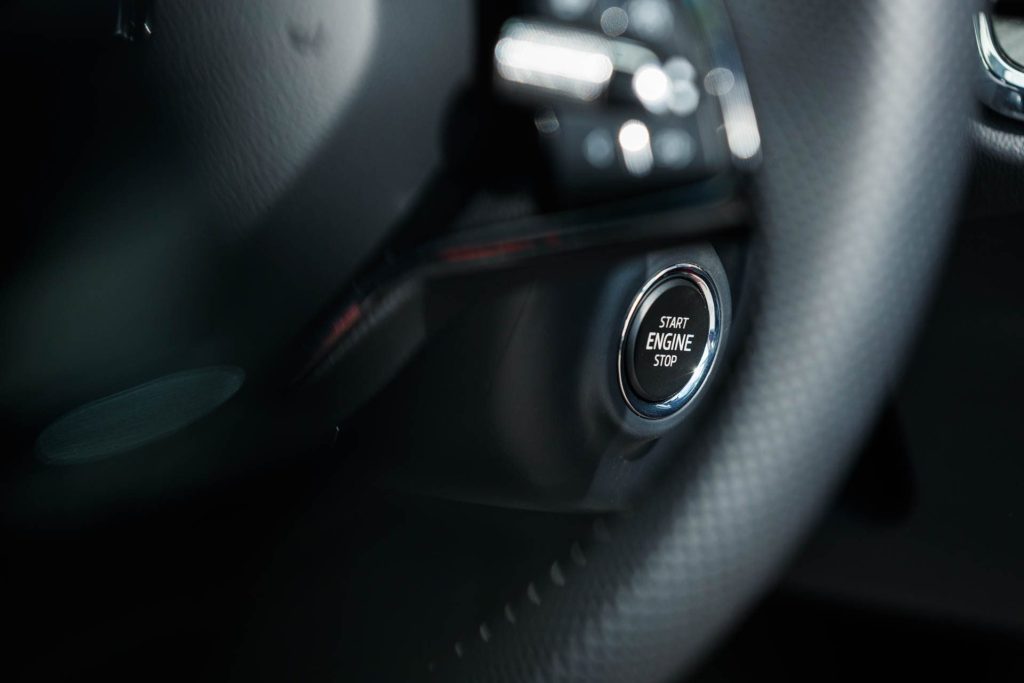
So a solid start for Skoda’s electric journey, even if pricing does stretch into six-figure territory, a first for the brand. But it’s a pretty well balanced vehicle, performance and handling more than acceptable, practicality a given as it’s a Skoda. The Simply Clever stuff is included too, like an umbrella in the driver’s door.
The only fly in the ointment is that VW’s ID.4 product kicks off under the $80k price point, so effectively makes entry nearly $30k less with the rebate. Naturally, spec levels in the Skoda are higher.
If you’re after stronger performance, dual motor versions are promised, likely for next year, along with an RS variant.
And on a side note, if you’re after a purpose built dog ferrying wagon, you’ll have to settle for the Skoda Superb.
| Model | Skoda Enyaq Sportline iV 80 |
| Price | $97,990 |
| Clean Car Discount | Neutral – $0 |
| Motor Output / Torque | 150kw / 310Nm |
| Battery | 77.0kWh net |
| Range | 532km |
| Drivetrain | single-speed auto / RWD |
| Energy Use | 16.7kWh / 100km |
| C02 Output | 0g/km |
| 0-100km/h | 8.11sec |
| 80-120km/h | 5.85sec (168.3m) |
| 100-0km/h | 34.81m |
| Stability systems | ABS, ESP |
| Safety | AEB, ACC, BSM, LDW, RCTA, ALK, AHB |
| Luggage capacity | 585-1710L |
| Tow rating | 750kg (1000kg braked) |
| Service intervals | 24 months / 30,000km |
| Warranty | 5yrs / 150,000km |
| ANCAP rating | Not yet rated |
| Weight | 2224kg (claimed) |


